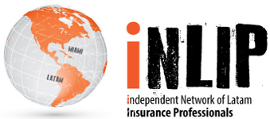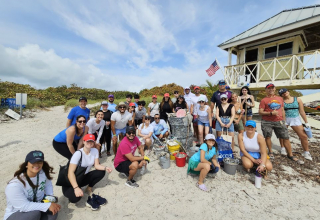
SUMMARY: I. Introduction – II. Pandemics versus epidemics and insurable risks versus uninsurable risks – III. Operational All Risk – IV. Contractors’ All Risk V. – Conclusions – VI. Sources.
Argañaraz Luque, Martín G. – Bonina, Sebastian. “Impacto del COVID-19 en los contratos de seguro Todo Riesgo Operativo y Todo Riesgo Construcción” Insuralex Argentina.
I. Introduction.
Since March 3, 2020, the date on which the World Health Organization (WHO) classified the outbreak of COVID-19 as a pandemic, several countries have adopted different measures that remain in force today, aimed at reducing the spreading and infection of virus among the population and thus avoid the collapse of their respective health systems. These include border closures, mandatory isolation and closure of activities.
The pandemic and the adopted measures have fully impacted on the economy of all the countries where the virus was able to enter and where the abovementioned measures had to be adopted, affecting mainly the areas of production and distribution of goods and services, with their consequent effects on the labour market, on the stock exchange indexes and, therefore, on the value of the companies.
The local and international insurance market is not immune to these effects. The suspension or prohibition of activities, the reduction or suspension of working hours, the mandatory quarantines, among other decisions, have caused countless losses in different businesses and stores that seek a remedy in the help that can come from each government.
In view of the distressing situation, some of the affected people have started to review their insurance contracts. Among them, within the contracts linked to property damage, they have identified different insurance coverages as potentially applicable, highlighting the coverage called business interruption or advance loss of profit, which is included in many insurance policies offered in the insurance market.
However, when analysing such coverage, many policyholders have realized that the spirit of the policies is contrary to the insurance of damages and/or effects caused by pandemics and, therefore, they have encountered obstacles posed by the insurance contract itself, either in relation to the extension of coverage or to the exclusions provided for therein.
This has generated a tension in the relationship between policyholders and insurers that has led to the filing of multiple lawsuits in jurisdictions governed by the common law legal system, through which the policyholders seek payment of the alleged compensation or a declaration of certainty that clarifies the existence or not of coverage and, hence, the legitimacy of the claim.
Among the policies from which the abovementioned problems have arisen, it is worth mentioning the Operational and Contractors’ All Risk Insurance policies. In our country (Argentina), driven by a legal system different from the common law, with pre-established rules and legally defined judicial language, it is clear what the spirit of the Operational and Contactor’s All Risk insurance contracts is summarized in the impossibility of covering risks such as pandemics, for the reasons that will be explained below.
II. Pandemics versus epidemics and insurable risks versus uninsurable risks.
Before moving forward with the analysis of whether a pandemic is insurable or not, we must clearly define its characteristics as opposed to those of the epidemic. An epidemic is defined as a disease that spreads within a country, community or region, affecting a significant number of people simultaneously, whereas a pandemic is an epidemic disease that spreads across several countries, affecting nearly all individuals within a single community, region or country.
The above definition of a pandemic contains two essential elements: on the one hand, the involvement of several countries simultaneously and, on the other hand, the involvement of almost all individuals within a single community, region or country. A contrast of these elements with the definition of the epidemic shows that, while the pandemic can affect almost all individuals in a very broad geographical universe, the epidemic only affects a significant number of people in a more limited geographical universe.
This point would lead to the conclusion that a pandemic affects all people, i.e. all insurable persons in several countries or worldwide. On this basis, COVID-19 has already been classified as a pandemic by the WHO.
With the previous clarifications made, it is known that the activity of the insurance companies is mainly fed by the premiums paid by the clients, that is, by the policyholders of the policies issued by these companies.
When calculating the amount of the premiums, the insurers take into consideration several parameters, such as the term of the insurance, the amount of the sum insured, the administrative and management expenses, the applicable taxes and/or charges and, mainly, the probability of occurrence of a fact or event (risk) that turns out to be the object of the insurance.
There are risks, mainly arising from nature, which affect a large majority of people and companies. When these risks occur, the consequent losses are unquantifiable, and these risks cannot be “modelled” by the actuaries of the insurance companies in charge of establishing the criterion for the determination of the premium, so such risks are not commercially insurable, as it happens with risks such as wars, climate change and nuclear risks.
In effect, insurance constitutes a capital pool comprised of the premiums paid by all the policyholders, from which the losses of “a few policyholders” are paid. If, in return, it were necessary to pay the loss of “all the policyholders” at the same time, the insurance company would not have the capacity to do so and would go bankrupt. In this sense, the statistics on the frequency, severity and costs of claims are used to maintain the structure of the pool, which is subject to government regulations to maintain adequate solvency of the insurers.
Pandemics, due to their unpredictable and unforeseeable nature, cannot be “modelled” by actuaries, as the principle of the losses of “a few policyholders” is not present in this case, and this is why they do not generally constitute an insurable risk in the insurance market.
Moreover, the pandemic constitutes an event impossible or almost impossible to be foreseen, which depends on a multiplicity of elements that must be combined at a specific time and that exceed the predictive or probability calculation capacity that an insurance company can develop, which is the reason why an insurance company -as a general principle- does not provide coverage against this type of events.
In the same vein, it is appropriate to define “risk” as the possibility that a harmful event damages the person or the person’s property, i.e. an event economically unfavourable. For the risk to be insurable, it must respond to a lawful interest.
The insurable risk thus constitutes a feared event uncertain in nature, but of possible occurrence and, as such, it is a necessary element in every insurance contract. Without an insurable risk there is no an insurance contract. From a theoretical point of view, the insurable risk has features such as:
- objectivity: it is independent of the will of the parties;
- uncertainty: it is not known when it will take place;
- frequency: probability of occurrence of the loss; and
- dispersion: the risk must not be generalized.
These features are considered by the insurance companies when underwriting their risks, issuing their policies and identifying the insurable risk(s). Among these features, we can highlight, in the first place, the “frequency”. As previously indicated, the pandemic constitutes a risk of (almost) impossible prediction for the insurance companies, that is, of impossible probability to predict, which justifies the impossibility of providing insurance coverage.
On the other hand, the nature of the “dispersion” of the risk should also be highlighted. Commercially speaking, insurance companies issue different types of policies, where, based on different criterion, such companies evaluate the insurable risks, what types of coverage can be offered, what is the possibility of a loss occurrence and what is the amount of the corresponding premium. In this way, the economic solvency of an insurance company depends on the adoption of adequate criteria that make it possible to make a roughly calculation of what the premium income and investments and the expenses for indemnity payments and current expenses will be, with the former tending to exceed the latter in order to maintain thus a sustainable and long-term operation.
From the point of view of dispersion, insurance companies cannot meet their obligations if the risk is generalized in nature. In other words, it would not be logical for an insurance company to offer or pretend to offer coverage for a risk that, if it occurred, would be generalized among all or many of its policyholders. To argue the opposite, that is, to deny the dispersion feature, would go, firstly, against the notion of insurable risk and, secondly, against any commercial logic regarding the activity of the insurance companies, since, when faced with non-dispersed risks, such insurance companies would have to deal with compensation that would, as a whole, exceed their economic capacity, which would inevitably led to the insolvency or bankruptcy of the insurance companies.
In short, a pandemic is a risk without dispersion that would affect in a generalized way all or many of the policyholders, being therefore uninsurable. In the insurance market these types of risks that affect in a generalized way are called fundamental risks, that is to say, risks the occurrence of which results in losses that are unquantifiable for the insurance companies and, therefore, non-amortizable, as they exceed their calculation capacity, resulting commercially uninsurable.
It should be noted that economic solvency is not only essential for an insurance company to obtain profits, but it also makes it possible for the insurance company to deal with the compensation to be paid for covered claims. When there is no dispersion, there is a generalized risk (and, therefore, uninsurable), which would lead the economic capacity to be reduced or disappear, which implies the inability to face the payment of present and future compensation, thus affecting the pool of policyholders.
Finally, although it is concluded that, as a general principle, the existence of coverage for a pandemic is unfeasible, this does not imply that, in exceptional cases, insurers cannot finally respond positively to a claim. This may occur, specifically, in those cases where policies expressly and exceptionally provide coverage for a pandemic or, failing that, due to errors or omissions in underwriting when issuing an insurance policy, such as inefficient wording, the existence of contractual or legal gaps or loopholes, translations of mother or basis policies with conceptual errors, among others. Consequently, in the event that any of these cases does not exist, nor any additional coverage applicable to the pandemic, the general principle of lack of coverage will remain.
For example, one of the cases that have echoed in the previous sense is the Wimbledon tennis tournament, one of the four tournaments that make up the international circuit called Grand Slam, which was cancelled by the organizer, All England Lawn Tennis Club (AELTC), since the spread of COVID-19.
It turns out that, in 2003, the AELTC requested its insurer to include a coverage clause for losses related to viruses, as a result of a concern generated in 2002 with the outbreak of the SARS virus.
This now allows the tournament organizer to be compensated for the losses resulting from the cancellation of the tournament, unlike the organizers of the other three Grand Slam tournaments, who have decided to postpone them instead of cancelling them, precisely because they lack the insurance coverage that would allow them to face the losses suffered.
It is important to note that the AELTC has paid an additional premium for pandemic-related coverage from 2003 to date.
III. Operational All Risk.
Generally speaking, this type of insurance is defined as the one that provides coverage to the policyholder in order to protect the property damage caused during the daily operations of a company.
When defining the insured peril, this type of policy establishes that coverage shall be granted against any sudden, abrupt and accidental physical damage or loss that falls upon the property used by the policyholder during the term of the policy, provided that such damage or loss results from a risk that is not expressly excluded under said policy, insofar as it could not reasonably have been foreseen by the policyholder, and which requires the repair or replacement of said property. In addition, many of these policies specifically identify the type of property covered and those not covered, such as, for example, machinery, buildings, equipment and/or products.
Consequently, for this coverage to apply in this type of insurance, the damage as such must meet the following conditions: (i) it must be physical in nature; (ii) it must occur in a sudden, abrupt and accidental manner; (iii) it must affect property used by the policyholder and in relation to the activity or operation performed; (iv) it must be based on a risk not expressly excluded by the policy; (v) it must not have been reasonably foreseen by the policyholder; (vi) it entails the necessary repair or replacement of the property; and (vii) it must be a property that is indeed insured by the policy.
III.Business interruption.
Without prejudice to the fact that the effects caused by a pandemic are in principle uninsurable risks, one of the coverages that is currently in the shop window and which some companies aim at as a remedy for the current losses suffered has to do with business interruption, inserted as an additional clause to the Operational All Risk Insurance policy. By means of it, the insurance companies are bound to indemnify their clients for the losses suffered as a consequence of the total interruption or reduction of the normal course of their commercial operation. In this way, it seeks to compensate the net income that the insured losses.
This coverage is usually included as an additional coverage in different types of insurance policies commercialized in the local and international market, tending to protect the property, which either covers all losses suffered except those expressly excluded (all risks), or provides coverage for specific risks (named peril).
One of the essential issues regarding the applicability of this coverage is related to the conditions that must be met for it to operate effectively. In particular, it requires the existence of direct physical damage, loss or destruction. Therefore, the main topic of discussion surrounding this coverage is whether the COVID-19 pandemic and its effects can be considered as direct physical damage, loss or destruction.
In this regard, the Argentine Civil and Commercial Code (“CC Code”) provides for the concept of damage in Book Three, Title V (“Other Sources of Obligations”), Chapter 1 (“Civil Liability”), Section 4 (“Compensable Damage”). Section 1737 of the CC Code stipulates that “There is damage when a right or an interest not prohibited by the legal system, which has as an object the person, the wealth, or a right of collective incidence, is damaged”. Section 1739 of the Code of Civil Procedure establishes that, in order for compensation to be due, there must be a direct or indirect, current or future, certain and subsisting damage. In other words, the same section specifically distinguishes between direct and indirect damage.
Based on the foregoing, whether it is a matter of actual damage, loss, or destruction, it will be necessary that, in either case, such impairment be of a direct nature, that is, that there is a relationship or link of immediacy between the impairment of the interest and the risk that would have caused it.
Consequently, when evaluating the impact of the COVID-19 on the assets of the policyholders, it turns out that the nature required by the coverage under consideration is not present, inasmuch as the coverage specifically requires that the damage to be compensated be an immediate consequence of the risk. It is neither the COVID-19 nor its propagation that immediately determines the claimed damage, but rather the governmental measures adopted later that connect such spread with the economic detriments. In other words, the government measures act as a link between the COVID-19 pandemic and the property damage suffered, showing a relationship not of a direct type, but rather of an indirect type. A virus, by itself, could not cause a direct damage for this type of coverage.
The case would be different for personal insurance, where a direct detriment could indeed be seen, for example, in the health of a policyholder. However, in this case, when considering property insurance and, in particular, Operational and Contractors’ All Risk insurance, the direct nature requirement is not met.
This notion of the direct nature of the damage is not new, but it is a valid cause of many of the exclusions of coverage that can be found in different types of property insurance policies, such as, for example, acts of terrorism, civil commotion, war, among others. Indeed, in these cases, the insurers expressly exclude all types of damage derived from this type of events that, being unrelated the activity of the policyholder, may indirectly affect it, and that is why the insurers decide not to grant coverage.
Thus, the previous considerations would give the insurance companies enough reasons to reject the claims coming from the policyholder under the general terms of the business interruption coverage, as long as there is no specific coverage that has been purchased by the policyholders in addition to the general coverage, which will be the subject of analysis in the following sections.
On the other hand, it should be noted that, just as we are not in the presence of a direct damage, we cannot speak of a material damage either. Generally, these policies refer to material or physical damage for the purposes of providing coverage, either in the operational clause applicable to the specific loss, or in different sections or subsections thereof, such as, for example, regarding the compensation period.
It should also be taken into account that, notwithstanding the particular case law decisions in Argentina that may be issued regarding the interpretation of material damage, such as in the Civil or Commercial Courts, it is important to take into consideration that, in the field of insurance contracts, the interpretation of this type of concepts should be in accordance with customs and practices, where material damage is associated to physical damage. In fact, the provisions of many policies expressly refer to the physical nature of a material damage in different sections or clauses. Moreover, to ratify this interpretation or notion of material damage, there are additional coverages that precisely respond to this lack of coverage.
Since the presence of the virus in the property of the policyholder does not cause material damage, given that there is no physical damage, destruction or deterioration of the structure or composition of the properties, there would be no coverage under this type of policy.
III. Additional coverage.-
Even if the business interruption coverage is not applicable to the particular case due to the arguments that were previously developed, there are additional coverages that can be included within the Operational All Risk policy and that could benefit policyholders in the current circumstances.
On the one hand, we find coverage for damage resulting from decisions or orders issued by civil or military authorities that prohibit access to the policyholder’s facilities, known as civil authority coverage. This coverage can be activated from different types of decisions adopted by the authorities that can affect the operation of the policyholder, such as express prohibition, closing of the business, quarantine or isolation measures, restrictions to the use of transportation, limitation to working hours or to the number of workers in the same place, to mention some examples.
An extension of coverage linked to suppliers may also be granted, against the loss of gross benefits suffered by the policyholder as a consequence of the interference in the business caused by physical and/or material loss or damage to goods in the premises of direct clients or suppliers, provided that such damage or loss is caused by risks not excluded. In general, for this coverage to be activated, it will be necessary for the client or supplier in question to be expressly named in the policy.
It should be taken into account that these additional coverages are generally subject to specific sub-limits and, accordingly, in the event that any one of them is admitted at the time of filing a claim, the compensation that may be paid shall be less than the sum insured.
If these additional coverages are contemplated in their policies, local policyholders should pay attention to them, since the measures adopted by the Argentine authorities, mainly the preventive and mandatory social isolation, may become a relevant element to base their claims only in relation to the additional coverages, but not in relation to the generic business interruption coverage.
III. Exclusions.-
As well as offering additional coverage that may be useful for the policyholder, there are also exclusions in this type of local and international policies such as direct or indirect consequences caused by viruses, bacteria or microorganisms. In this case, given that both direct and indirect consequences are contemplated, such exclusion would also include, for example, the delays caused by a quarantine or isolation measure that prevents technicians, spare parts or machinery from being used, acquired or used to repair material damage.
Other exclusions we may find are delay or loss of market, loss or damage or business interruption on an indirect or remote basis and interruption of access.
IV. Contractors’ All Risk. (CAR)
In general, this type of policy, on the one hand, seeks to cover material damage or loss suffered by goods or interests under construction in the framework of civil works and, on the other hand, grants coverage against possible claims from third parties for damage to their goods and persons in connection with the work under construction, so that this policy combines coverage for property damage with coverage for civil liability.
This type of policy, when defining the insurable risk regarding own damage, provides coverage against material damage to the property of the policyholder that takes place during the construction process and in the place defined for it, which occurs in an accidental, sudden and unforeseen manner, making repair or replacement of property necessary, provided that said damage is caused by risks covered by said policy.
The above implies that there are several conditions that must be met for the coverage to apply effectively, since it is not a matter of any damage that the policyholder sustains, but that such damage must occur: (i) on a property intended for construction; (ii) on the site intended for construction; (iii) in an accidental, sudden and unforeseen manner; (iv) from insured risks and/or not expressly excluded; and (v) in such a manner that it entails the repair or replacement of the property.
IV. Advance loss of profit.
In the case of Contractors’ All Risk policies, the loss of profit anticipated (Advance Loss of Profits -ALOP-), from the delays that result from the damage or destruction of the goods used in the construction, may be foreseen as covered or expressly excluded.
In case of coverage, the conditions of applicability of business interruption indicated in the Operational All Risk policies also apply to the coverage of advance loss of profit in the Contractors’ All Risk policies. In this way, the CAR policies will provide coverage for damages to the insured goods during the construction work carried out, whenever such damage occurs in an accidental, sudden and unforeseen manner and makes it necessary to repair and/or replace them, and as a direct consequence of any of the risks covered. Consequently, the considerations previously outlined in relation to the non-existence of direct damage and, therefore, of insurance coverage, are applicable to the case.
IV. Additional coverage.
As in the Operational All Risk policies, this type of policy may also include as additional coverage the damage caused by decisions adopted by a civil or military authority, under conditions similar to those already analysed.
In this type of coverage it is important to take into consideration that, in certain cases, the decision of the authorities does not directly affect the operation of the policyholder, but it so does indirectly. In this sense, there are works or projects that, because they are considered essential, are not reached by the government measures directly, but indirectly, when these measures impact, for example, on the production and/or distribution chain, as it happens with limitations in the activity of suppliers.
Similarly, there is an additional coverage that can be included in this type of policy, known in the international market as trade disruption and supply chain. In this case, coverage is granted to the policyholder as a result of any damage or loss resulting from events such as interruption of the activity of suppliers and delay in deliveries, among others. It should be noted that, in this case, the coverage shall be effective as long as the relevant works are duly authorized, since the damage caused by any works that are interrupted, suspended or prohibited would not fit within this particular coverage.
Finally, it is worth mentioning two more additional coverages. On the one hand, what is known as non-damage BI extensions, that is, coverage that is granted for any damage or loss resulting from the interruption of business or advance loss of profit without the existence of direct damage and, on the other hand, coverage for remediation expenses. In the first case, many policies include this additional coverage, precisely as a response to the non-existence of coverage for lack of physical material damage, as previously indicated. In this way, coverage is provided for business interruption or advance loss of profit, even when there is no direct material damage, but as long as it is related to specifically defined risks. Of course, the novelty of the COVID-19 makes its inclusion as a risk under this additional coverage unlikely in local and international policies. In the second case, coverage for remediation costs requires, as in the case of business interruption or advance loss of profit, the existence of direct damage.
It should be clarified that, as with Operational All Risk policies, Contractors’ All Risk policies also contemplate specific sub-limits for this type of additional coverage.
IV. Exclusions.
Exclusions similar to the Operational All Risk policies apply to Contractors’ All Policies. Thus, it is worth mentioning the exclusion for virus, bacteria or microorganism, whose application has been extended mainly since the SARS outbreak in 2002. Other applicable exclusions are those of risks of contamination and unfavourable business conditions, which concepts can also give rise to multiple interpretations.
V. Conclusions.
Regarding the wording of the general clauses of the Operational and Contractors’ Al Risk insurance policies in the local and international market, there would be no coverage for any damage resulting from government measures taken to mitigate the spread of the pandemic, since, first, there is no direct link or causal relationship between the COVID-19 pandemic and the damage and, second, such damage would not be material in nature.
In addition, the pandemic is an uninsurable risk, as it is (almost) impossible to be foreseen by insurance companies, and it does not meet the dispersion requirement of an insurable risk either. This has been confirmed worldwide by various insurance markets, such as the UK, where insurance companies have not only defined the pandemic as an uninsurable risk for the above reasons, but have also expressed concern about the insolvency of companies that would result from massive payouts of compensation to policyholders for coverage that, in its spirit, was not in any way intended or considered in the calculation of the premium when policies were issued.
Moreover, these companies have asked government authorities to design an integration scheme between them and the government in order to provide a response to policyholders without compromising their economic capacity.
There is still the possibility that the policies examined above may offer specific and varied contractual clauses and conditions, including additional coverage and miscellaneous exclusions, which obliges the policyholder to pay attention to the concluded insurance, not only at the time of initiating their claims under the current circumstances, but also in the future, when contracting new insurance or renewing the policies and negotiating new conditions.
While it is clear that the greater the coverage, the higher the premium cost to be paid by the policyholder, it is also true that current circumstances show the need to weigh these risks up, evaluating what are the current costs and future benefits of paying a higher premium to provide coverage for economic losses caused by risks that, until now, seemed impossible. The Wimbledon case is a clear example of this.
Meanwhile, insurers will have to assess whether they have an appetite for insuring the risk of a pandemic, which in our opinion is something difficult to occur, at least in a generalized way, since this could lead them to a state of economic incapacity that would deprive them of responding to future claims. It should be taken into account that, in relation to this aspect, these are risks that neither the insurers nor the policyholder had specifically foreseen and that, therefore, were not part of the calculation of premiums.
VI. Sources.
NEW HAMPSHIRE INSURANCE DEPARTMENT, “Business interruption insurance coverage and the novel coronavirus 2019 (COVID-19)”. https://www.nh.gov/insurance/consumers/faq-business-interruption-insurance-coronavirus.htm.
BISER, Sarah B. — ROHRBERGER, Robert J. — LANGER, Philip Z. — MOONEY, C. J. (Graham Company) — BLOOMFIELD, Carl (Graham Company), “COVID-19: Construction contracts and potential claims under business interruption, civil authority and other insurance policies and endorsements”, Fox Rothschild LLP. https://www.foxrothschild.com/publications/covid-19-construction-contracts-and-potentialclaims-under-business-interruption-civilauthority-and-other-insurance-policies-andendorsements.
POLLACK, George J. P., “COVID-19 insurance related considerations. Business interruption coverage update”, Davies Ward Phillips & Vineberg LLP. https://www.dwpv.com/en/Insights/Publications/2020/COVID19-Insurance-Related-Considerations.
McVEY, Paul, “Coronavirus: preparación para la interrupción de negocios y otros siniestros”, Marsh & McLennan Companies.https://www.marsh.com/co/insights/risk-incontext/coronavirus-preparacion-interrupcionnegocios-siniestros.html.
CHIGLINSKY, Katherine, “Chubb CEO Greenberg warns retroactive measures would ‘bankrupt’ insurance industry”, Insurance Journal.https://www.insurancejournal.com/news/national/2020/04/16/565109.htm.
Willis Towers Watson, “La gestión de riesgos provocada por el COVID-19”. https://www.willistowerswatson.com/es-ES/Insights/trending-topics/la-gestion-de-riesgosprovocada-por-el-covid-19.
“Wimbledon organisers set to net £ 100 million insurance payout”, Daily News. http://www.dailynews.lk/2020/04/06/sports/215915/wimbledon-organisers-set-net-%C2%A3100million-insurance-payout.
LITTLEJOHNS, Peter, “Insurance industry associations call for government intervention in case of future pandemics”, NS Insurance. https://www.nsinsurance.com/news/government-insurance-for-pandemics. Civil and Commercial Code of Argentina.
Source: Insuralex Argentina
1 Argañaraz Luque, Martín G. – Bonina, Sebastian. “Impacto del COVID-19 en los contratos de seguro Todo Riesgo Operativo y Todo Riesgo Construcción”. August 25, 2020. Special contribution to La Ley. All rights reserved (Law 11.723).















